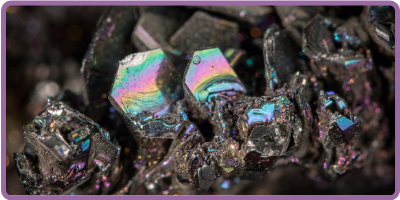Silicon Carbide (SiC) Micron and Nano Powder
Silicon carbide nanoparticles have wide applications in field emission displays and light emitting devices. Moreover, nanoscale silicon carbide is used in designing and manufacturing electro-devices in nanoscale, nanosensors and biological labels. Bulky silicon carbide (SiC) is known as a refractory agent and semiconductor with excellent thermal, mechanical and chemical behavior. The melting point of this non-oxide ceramic is above 2800 °C, perfectly resistant against corrosion with low thermal expansion coefficient. Silicon carbide has a large bandgap and remarkable mechanical strength with low density and high hardness 1.
Silicon Carbide Properties
Silicon carbide, also known as carborundum, has a rare natural occurrence found in moissanite mineral. However, it has been largely produced as powder since the late nineteenth century with the most application as an abrasive agent. It been found applications in semiconducting electronics devices which function at high voltages and high temperatures. The most favorable electronic properties of silicon carbide include low quantum confinement, high ionic mobility, high breakdown electric field, and high saturation electron drift velocity and high thermal and electrical conductivity. Using a technique called Lely method, silicon carbide’s large single crystals are grown and cut as small as gems called synthetic moissanite. Through binding silicon carbide together, practically hard ceramics are used as a highly enduring agent in car clutch and ceramic plates, car brakes and bulletproof vests. Silicon carbide is also used in electronics, in designing detectors and light emitting diodes (LEDs). Even though silicon carbide is rarely found on Earth crust, it is highly abundant in space mostly near carbon-rich stars with the most common crystal forms as beta-polymorph. In general, crystalline silicon carbide comprises some 250 different forms and is produced in glassy amorphous crystals by pyrolysis of preceramic polymers in an inert gas atmosphere. The most common crystalline structure of SiC is alpha silicon carbide (α-SiC) with a hexagonal configuration which forms at temperatures over 1700˚C. There is a modified silicon carbide as β-SiC which is processed using a zinc blend crystal structure with applications in supports for heterogenous catalysts due to their higher surface area compared to the alpha form.
Read More About Silicon Carbide (SiC)
Silicon Micron and Nanoparticles powder
Particles and mostly crystals can be classified according to their size as nano and micron. Generally, the particles with their size around 70 microns are referred as micron particles while those with sizes below 100nm are considered as nanoparticles. Silicon carbide (Sic) is available as micron and nano scales with different properties as well. Regarding high fracture toughness, excellent hardness, high resistance towards oxidization, perfect mechanical strength and stability in extreme environmental conditions, silicon carbide is expected to adopt novel and even improved properties when its obtained in nano scale. The silicon nanoparticles have been demonstrated to exhibit new properties in addition to the improved behaviors mentioned earlier. Silicon nanoparticles have unique optical and electrical properties with higher strength and hardness when included in some target materials. Technically, the impact of silicon carbide nanoparticles has been investigated so precisely proving remarkable impact of the size their physical and mechanical behavior. It has been shown that the encapsulation of smaller silicon carbide nanoparticles in the bulk of aluminum has resulted in significant grain refinement when compared to SiC nanoparticle with bigger sizes. Moreover, the particle mean size has been demonstrated to influence the heat transfer capability and basic microscopic properties of α-SiC/water nanofluids. It has been proved that large-particle nanofluids have lower viscosity and higher thermal conductivity which is originated from the solid/liquid smaller area of interface. What’s more, the particle size directly and significantly affects the catalytic activity 2.
Synthesis and Preparation of Silicon Nano/Micron Particles and Powder
Numerous synthesis methods with different particle size based on the application has been reported in the literature. The methods introduced so far, have achieved particles in micron and nano size scales. However, the synthesis methods with nanoscale silicon carbides are mostly favorable. According to a method, silicon nanoparticles are prepared through using the wastes of compact discs (CDs) char as the carbon source silicon oxide for silicon and following the carbothermal reduction procedure at 1550˚C. the carbon from the CD wastes is extracted through pyrolysis technique in argon atmosphere at 700˚C for about 20 minutes. Silicon dioxide (SiO2) and the carbon extract are mixed based stochiometric ratio in a ring mill for a period of two hours to gain pellets. The pellets are put in a furnace to process the carbothermal reduction for an hour to finally obtain the silicon nanoparticles with the sizes ranging from 40 to 90 nm 1. Based on a report using the so-called sol-gel method, silicon carbide nanoparticles are synthesized using the tetraethyl orthosilicate (TEOS) as the precursor with hydrochloric acid and ethanol to control the pH and homogeneity of the reaction solution. According to this method, particle size shows to have increased the density and harness of resulting nanoparticles 3. In a technique, silicon carbide nanowires are prepared taking the advantage of metal catalyst free thermal evaporation technique. The process involves the placing silicon and graphite aside in a columnar graphite crucible with the entire system inside a vacuum furnace and argon gas atmosphere and heating it up to 1000C 4.

Applications of Silicon Nano/Micron Particles and Powder
Considering the mechanical strength, harness and thermal properties of silicon carbide with the improved quality in its nanoscale, silicon carbide nanoparticles have found applications in numerous sectors of industry. Silicon nanoparticles are famous for their practically wide bandgap in electronics and have been applied there. Another property that has made SiC nanoparticles so common and popular is their thermal conductivity. Also, in extreme environmental conditions, the use of a material with higher thermal conductivity seems essential. All the mentioned properties and specifications have led to silicon nano and micron particles application in electronic devices, field electron emission, sensors and power electronics. They are used as blue and ultra violet emitting diodes since they are capable of emitting sable and high-intensity blue and green light as well as ultra violet radiation. Silicon nano and micron particles have tuned out as effective and economical materials for industrial and engineering uses namely nanodevices, microelectronics, in biomedical engineering devices, nanocomposites, hydrophobic, and optoelectronics mainly due to the fact that SiC nanoparticles don’t need cooling down.
Click Image to Learn Also About Silicon
SiC carbides carbide nano and micron particles and powder show much improved and intensified properties compared to their bulky form. It has been shown that many properties of bulky silicon carbide are directly dependent on the particles size like the bandgap, as an example, has different widths when it is in bulky, micron and nano scales. SiC in its all particle size range show promising hardness, toughness with excellent mechanical strength.
References
1. Rajarao, R., Ferreira, R., Sadi, S. H. F., Khanna, R. & Sahajwalla, V. Synthesis of silicon carbide nanoparticles by using electronic waste as a carbon source. Mater. Lett. 120, 65–68 (2014).
2. Sun, B., Xie, R., Yu, C., Li, C. & Xu, H. Structural characterization of SiC nanoparticles. J. Semicond. 38, (2017).
3. Birru, A. K., Reddy, G. K., Ajay, G. & Kumar, N. K. Effect of Reinforced Silicon Carbide Nanoparticles in Epoxy Composites. Mater. Today Proc. 2, 4348–4352 (2015).
4. Mohd Sohor, M. A. H., Mustapha, M. & Chandra Kurnia, J. Silicon carbide- from synthesis to application: A review. MATEC Web Conf. 131, 1–6 (2017).
You must be logged in to post a comment.



About the author